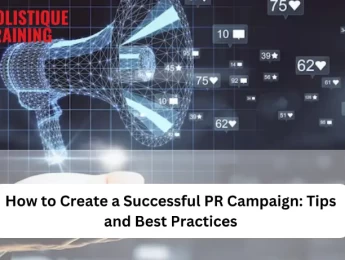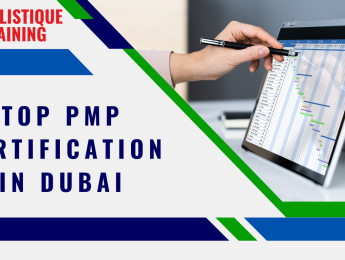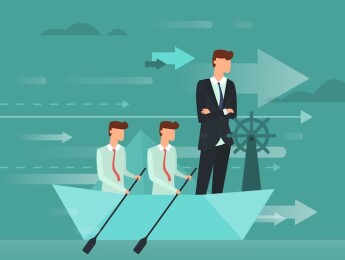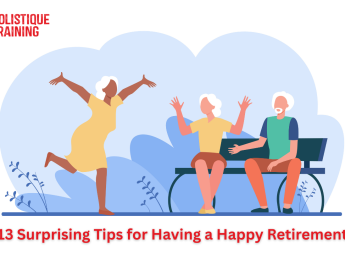- Table of Contents
- Introduction
- What Is Public Relations?
- Common Objectives of Public Relations
- 1. Building Brand Awareness
- 2. Reputation Management
- 3. Audience Engagement
- 4. Crisis Management
- 5. Media Relations
- 6. Public Policy Advocacy
- Why Is a PR Campaign Important?
- Trust and Credibility
- Positive Image
- Crisis Preparedness
- Influence
- Competitive Advantage
- Stakeholder Engagement
- Adaptation to Changing Trends
- How to Create a PR Campaign
- 1. Set Clear Objectives
- 2. Identify Your Target Audience
- 3. Craft a Compelling Message
- 4. Choose the Right Channels
- 5. Create a Content Plan
- 6. Implement the Campaign
- 7. Build Relationships
- 8. Incorporate Multimedia Elements
- 9. Encourage Audience Participation
- 10. Monitor and Adjust
- 11. Evaluate and Learn
- Tips and Best Practices When Launching a PR Campaign
- 1. Know Your Audience
- 2. Craft a Compelling Narrative
- 3. Be Authentic
- 4. Visual Appeal
- 5. Consistency is Key
- 6. Engage with Influencers
- 7. Utilise Social Media Effectively
- 8. Prepare for Contingencies
- 9. Monitor and Respond
- 10. Evaluate and Learn
- 11. Celebrate Success and Express Gratitude
- How to Measure the Success of a PR Campaign
- Media Coverage
- Social Media Engagement
- Website Traffic and SEO
- Lead Generation and Conversion Rates
- Audience Surveys and Feedback
- Influencer Impact
- Content Performance
- Brand Sentiment Analysis
- ROI (Return on Investment)
- Post-Campaign Interviews and Focus Groups
- Competitor Analysis
- Long-Term Impact and Brand Loyalty
- 5 Examples of Famous PR Campaigns
- 1. Dove's Real Beauty Campaign
- 2. Airbnb's "We Are Here" Campaign
- 3. ALS Ice Bucket Challenge
- 4. Coca-Cola's "Share a Coke" Campaign
- 5. Nike's "Just Do It" Campaign
- Who Needs a PR Agency: Is It Right for Your Business?
- 1. Lack of In-House Expertise
- 2. Limited Resources
- 3. Need for Objectivity
- 4. Crisis Management
- 5. Time Constraints
- 6. Specialised Expertise
- 7. Global Reach
- 8. Long-Term Strategy
- 9. Data-Driven Decision Making
- 10. Event Management and Promotion
- Conclusion
Introduction
Public relations (PR) is a powerful tool for businesses and organisations seeking to establish and maintain a positive image in the eyes of the public. A well-executed PR campaign can enhance reputation, foster goodwill, and drive success in various spheres, from corporate branding to public affairs. In this comprehensive guide, we'll explore the fascinating world of PR campaigns, from their fundamental principles to real-world examples, and help you understand whether your business can benefit from the expertise of a PR agency.
What Is Public Relations?
Public Relations, often abbreviated as PR, is the art and science of managing and improving the relationship between an organisation and its target audience. This audience can encompass a wide spectrum of stakeholders, including customers, employees, investors, government bodies, and the general public. PR professionals work diligently to shape the perception of their clients in a positive light, building trust, credibility, and a strong reputation.
In essence, PR is all about communication, emphasising managing the flow of information to ensure that it aligns with an organisation's goals and values. PR practitioners use various strategies and tools to convey their messages effectively, whether it be through press releases, social media, events, or other means.
Common Objectives of Public Relations
Public relations campaigns are designed with several key objectives in mind, all aimed at creating a favourable image for the organisation:
1. Building Brand Awareness
One of PR's primary objectives is to build and enhance brand awareness. Brand awareness is how a target audience recognises and associates an organisation's name, logo, or products with its core values and offerings. Strong brand awareness is essential because it lays the foundation for all other aspects of an organisation's communication efforts. When people know your brand, they are more likely to engage with your content, consider your products or services, and ultimately become loyal customers.
A well-executed PR campaign can effectively introduce a brand to a new market or rekindle interest in an established one. This objective often involves securing media coverage in influential outlets, participating in industry events and expos, and leveraging social media to create a buzz around the brand.
2. Reputation Management
Maintaining a positive reputation is a critical component of PR. Your reputation represents your stakeholders' collective opinions, perceptions, and sentiments, including customers, employees, investors, and the general public. A positive reputation is an invaluable asset, as it fosters trust, credibility, and loyalty, all of which are essential for long-term success.
Reputation management in PR involves promoting an organisation's strengths and effectively handling any negative incidents or crises. It requires a combination of proactive strategies, such as highlighting an organisation's corporate social responsibility efforts, and reactive strategies, like crafting a swift and transparent response when an issue arises.
3. Audience Engagement
Engaging with your audience is another critical objective of PR campaigns. Today's audiences are more demanding and discerning than ever before. They expect organisations to communicate with them, listen to their feedback, answer their questions, and address their concerns.
PR professionals strive to create opportunities for two-way communication. This can be achieved through social media interactions, responding to customer inquiries and feedback, conducting surveys, and organising events that allow direct engagement with the target audience. Effective engagement fosters a sense of community and builds lasting relationships.
4. Crisis Management
While organisations aim to prevent crises, they must also be prepared to handle them effectively when they do occur. Crisis management is a crucial objective of PR because how an organisation responds during challenging times can significantly impact its reputation and future success.
PR professionals work to develop crisis communication plans that outline how to respond to various scenarios, from product recalls to public relations disasters. These plans include key messaging, designated spokespersons, and strategies for maintaining transparency and addressing the concerns of stakeholders. The goal is to navigate crises with minimal damage to the organisation's reputation.
5. Media Relations
Building and maintaining positive relationships with the media is a fundamental aspect of PR. The media serves as a bridge between organisations and the public, making it a powerful tool for disseminating messages and news. Media relations involve establishing connections with journalists, bloggers, and influencers who cover topics relevant to an organisation's industry or field.
PR professionals pitch stories, press releases, and other content to the media to secure positive coverage. This coverage can include news articles, interviews, and reviews that help promote the organisation's products, services, or initiatives. Building strong media relationships is key to ensuring an organisation's message is accurately and favourably conveyed to the public.
Objective | Description | Impact |
Building Brand Awareness | Increase recognition of the brand name. | Enhanced market visibility and customer recall. |
Reputation Management | Maintain positive perceptions and trust. | Credibility, trust, and loyalty from stakeholders. |
Audience Engagement | Interact directly, gather feedback, and connect. | Stronger community, customer loyalty, feedback loop. |
Crisis Management | Effectively address challenges, maintain brand image. | Minimise reputational damage during difficult times. |
Media Relations | Cultivate relationships with journalists, influencers. | Positive media coverage, broader audience reach. |
Table 1: Objectives of PR campaigns
6. Public Policy Advocacy
In some cases, PR campaigns aim to influence public opinion and government policies. Organisations, especially those in highly regulated industries or those with social and environmental initiatives, use PR to raise awareness about specific issues and advocate for change.
This objective involves public affairs PR, where organisations work to shape public opinion on issues related to government policy, legislation, and regulatory changes. By engaging in public policy advocacy, organisations can create a supportive environment for their goals and initiatives and drive policy changes that align with their objectives.
In summary, public relations' common objectives are multifaceted and serve as the foundation for creating and maintaining a positive image and reputation for organisations. By strategically focusing on building brand awareness, managing reputation, engaging with audiences, handling crises effectively, nurturing media relationships, and advocating for public policies, PR professionals contribute to an organisation's long-term success and impact on society.
Why Is a PR Campaign Important?
PR campaigns are instrumental in today's hyper-connected and information-rich world. In fact, statistics show that PR wields 90% greater influence over consumers compared to advertising. That being said, let’s discuss the reasons why PR holds so much vitality:
Trust and Credibility
A PR campaign plays a pivotal role in building trust and credibility for an organisation. In an era where consumers are inundated with information, establishing trust is more challenging yet essential than ever before. Through strategic communication and transparent messaging, PR professionals can create a sense of authenticity around the organisation, making stakeholders, including customers, investors, and employees, feel confident about the brand. Trust is the foundation for lasting relationships, fostering loyalty and positive word-of-mouth.
Positive Image
A positive public image is invaluable. It is what sets an organisation apart from its competitors and attracts stakeholders. Organisations can shape how the public perceives them through a well-executed PR campaign. PR efforts create a favourable and enduring image by highlighting achievements, community involvement, ethical practices, and innovation. Positive public perception often translates into increased sales, brand loyalty, and a stronger market position.
Crisis Preparedness
No organisation is immune to crises. Whether it's a product recall, a negative news story, or a social media scandal, how a company handles these situations can make or break its reputation. PR campaigns are essential for crisis preparedness. A robust crisis communication strategy allows organisations to respond promptly, transparently, and empathetically during difficult times. A well-managed crisis can even turn the situation around, showcasing the organisation's commitment to resolving issues and protecting its stakeholders.
Influence
PR has the power to influence public opinion, perceptions, and behaviours. Through compelling storytelling, organisations can shape narratives that resonate with the values and emotions of their target audience. By connecting with people on a deeper level, PR campaigns can influence purchasing decisions, sway public attitudes, and even drive social change. In the age of social media, where information spreads rapidly, a well-crafted PR message can become viral, amplifying its impact and reach.
Competitive Advantage
In today's saturated markets, having a competitive edge is essential. PR campaigns can help organisations differentiate themselves from competitors. By showcasing unique selling points, innovative approaches, and positive social impact, PR efforts create a distinct identity in the minds of consumers. A compelling narrative can make a brand memorable, leading to increased market share and customer preference over competitors.
Stakeholder Engagement
Engaging with stakeholders is a vital component of PR campaigns. PR professionals foster a sense of belonging and loyalty by involving stakeholders in an organisation's initiatives and values. Effective engagement involves communicating the organisation's message, actively listening to feedback, and addressing concerns. This two-way communication builds strong relationships with customers, employees, investors, and the community, enhancing the organisation's reputation and support base.
Adaptation to Changing Trends
The digital age has transformed how information is consumed and shared. PR campaigns adapt to these changing trends, utilising social media, online influencers, and digital platforms to reach wider audiences. By staying ahead of technological advancements and social media trends, PR professionals ensure that organisations remain relevant and continue to capture the attention of their target demographic.
In summary, a PR campaign is vital for organisations because it goes beyond mere communication; it shapes perceptions, builds trust, and creates meaningful connections. PR campaigns are instrumental in navigating the complexities of the modern business landscape by strategically managing the organisation's image, addressing challenges transparently, and engaging with stakeholders effectively. In essence, a well-executed PR campaign is not just a promotional tool; it is the cornerstone of a robust and enduring organisational reputation.
How to Create a PR Campaign
Creating a successful PR campaign requires careful planning, creativity, and a deep understanding of your organisation, target audience, and the media landscape. Here are the steps involved in creating an effective PR campaign:
1. Set Clear Objectives
Begin by defining the objectives of your PR campaign. Are you aiming to increase brand awareness, promote a new product, manage a crisis, or change public perceptions? Clearly defined objectives provide direction and help measure the campaign's success.
2. Identify Your Target Audience
Understand your audience's demographics, interests, behaviours, and preferences. Tailor your messages to resonate with this specific group. Knowing your audience intimately enables you to create content that genuinely engages and appeals to them.
3. Craft a Compelling Message
Develop a clear and compelling message that aligns with your campaign objectives. Your message should be concise, memorable, and relevant to your audience. It should evoke emotion, create intrigue, or provide a solution to a problem, making people connect with your story.
4. Choose the Right Channels
Determine the communication channels that are most effective for reaching your target audience. Traditional media outlets, social media platforms, blogs, podcasts, and industry events are all potential channels. Your choice of channels should align with your audience’s preferences and habits.
5. Create a Content Plan
Develop a comprehensive content plan that supports your campaign message. This could include press releases, blog posts, videos, infographics, social media updates, and multimedia presentations. Each piece of content should reinforce the campaign's central message and be tailored to fit the chosen communication channels.

6. Implement the Campaign
Launch your PR campaign, ensuring all materials are distributed effectively across the chosen channels. Timing is crucial – consider industry events, holidays, or trending topics that can amplify your message. Be consistent in your messaging across all platforms to maintain coherence and reinforce your campaign’s central theme.
7. Build Relationships
Forge relationships with journalists, bloggers, social media influencers, and other key players in your industry. Personal connections can lead to media coverage and partnerships that amplify your message. Engage with these individuals genuinely and provide them with valuable, relevant information.
8. Incorporate Multimedia Elements
Multimedia elements such as videos, images, and interactive content can enhance the impact of your PR campaign. Visuals are powerful tools for storytelling and can convey emotions and messages in ways that text alone cannot. Create visually appealing and shareable content to captivate your audience.
9. Encourage Audience Participation
Encourage audience participation and engagement. Interactive campaigns, social media contests, surveys, and user-generated content can create buzz around your campaign. Involving your audience not only increases their investment in your message but also expands your campaign’s reach through social sharing.
10. Monitor and Adjust
Implement a robust monitoring system to track the progress of your PR campaign. Use analytics tools to measure website traffic, social media engagement, media coverage, and audience sentiment. Analyse the data to understand what is working and what needs adjustment. Be prepared to adapt your strategy based on the campaign’s performance metrics.
11. Evaluate and Learn
After the campaign concludes, conduct a thorough evaluation. Assess the impact of the campaign against the initial objectives. Identify strengths, weaknesses, opportunities, and threats. Analyse feedback from stakeholders and the media. Use this information to learn from the campaign’s successes and challenges, refining your strategies for future initiatives.
Incorporating these steps into your PR campaign planning and execution process will increase the likelihood of creating a compelling, impactful, and memorable campaign that resonates with your target audience and achieves your organisational goals. Flexibility and creativity are key; be willing to adapt your approach based on real-time feedback and changing market dynamics.
Tips and Best Practices When Launching a PR Campaign
To make your PR campaign even more effective, consider the following tips and best practices:
1. Know Your Audience
Understand your target audience thoroughly. Conduct market research to identify their preferences, behaviours, and interests. Tailor your messages and content to resonate with their needs, aspirations, and challenges. The more you know about your audience, the more effectively you can engage them.
2. Craft a Compelling Narrative
Storytelling is a powerful tool in PR. Create a compelling narrative that captivates your audience. Focus on the human aspect of your story, highlighting how your organisation’s products or services positively impact people’s lives. A well-crafted story can evoke emotions, making your campaign memorable and relatable.
3. Be Authentic
Authenticity builds trust. Be genuine and transparent in your communication. Authenticity fosters credibility and helps in establishing a meaningful connection with your audience. Avoid exaggerations or false claims; instead, focus on real achievements and genuine experiences.
4. Visual Appeal
Use visually appealing content to enhance your message. High-quality images, infographics, videos, and interactive content can significantly increase engagement. Visual elements capture attention and make complex information more digestible and shareable on social media platforms.
5. Consistency is Key
Maintain a consistent brand image and messaging across all communication channels. Consistency helps reinforce your campaign’s core message and ensures your audience easily recognises your brand. Use consistent visual elements, slogans, and language in all your PR materials.
6. Engage with Influencers
Identify and collaborate with influencers and thought leaders in your industry or niche. Influencers can amplify your message, extend your reach, and enhance your campaign’s credibility. Choose influencers whose values align with your brand, ensuring their endorsement feels authentic and genuine.
7. Utilise Social Media Effectively
Social media platforms are powerful tools for PR campaigns. According to Sprout Social, approximately 45% of PR firms plan to increase investments in social media management, while an additional 32% focus on expanding multimedia content creation. Choose the platforms where your target audience is most active and tailor your content accordingly. Encourage social media sharing by creating shareable content, organising contests, and engaging with your audience through polls and Q&A sessions.
8. Prepare for Contingencies
Anticipate potential challenges or negative reactions and prepare contingency plans. A crisis communication strategy is essential to address unforeseen issues promptly and professionally. Having predefined responses and designated spokespersons can help manage crises effectively, minimising reputational damage.
9. Monitor and Respond
Monitor the progress of your campaign in real-time. Use social listening tools and media monitoring services to track mentions and audience sentiment. Respond promptly to comments and inquiries, whether they are positive or negative. Engaging with your audience demonstrates responsiveness and reinforces your commitment to their concerns.
10. Evaluate and Learn
After the campaign concludes, conduct a thorough evaluation. Analyse key performance indicators (KPIs) such as media coverage, social media engagement, website traffic, and audience sentiment. Identify what worked well and what could be improved. Use these insights to refine your strategies for future campaigns.
11. Celebrate Success and Express Gratitude
Acknowledge and celebrate your campaign's successes, whether big or small. Express gratitude to your team, partners, influencers, and audience for their support. Recognising and appreciating everyone involved fosters a positive atmosphere and encourages continued collaboration in future endeavours.
By following these tips and best practices, you can launch a PR campaign that not only captures attention but also resonates with your audience, builds positive relationships, and effectively achieves your organisational objectives. Remember that each campaign is a learning opportunity; analysing successes and challenges can provide valuable insights for future PR initiatives.
How to Measure the Success of a PR Campaign
Measuring the success of a PR campaign is crucial to determining its impact and return on investment. Several key performance indicators (KPIs) can help assess its effectiveness:
Media Coverage
Analyse the quantity and quality of media coverage your campaign receives. Track the number of articles, features, interviews, and mentions in newspapers, magazines, blogs, TV, and radio. Pay attention to the tone of the coverage – positive, neutral, or negative. Positive media coverage indicates a successful campaign that has captured the attention of journalists and influencers.
Social Media Engagement
Social media metrics provide valuable insights into audience engagement. Monitor likes, shares, comments, retweets, and mentions related to your campaign. Calculate the reach and engagement rate of your social media posts. Positive sentiment in social media discussions indicates that your campaign has resonated with the audience.
Website Traffic and SEO
Track the increase in website traffic during the campaign period. Use tools like Google Analytics to monitor the number of visitors, page views, bounce rates, and average session duration. Additionally, assess changes in organic search traffic and keyword rankings related to your campaign. An uptick in website visits indicates that your campaign has successfully driven online interest.
Lead Generation and Conversion Rates
Measure the number of leads generated during the campaign. This could include newsletter sign-ups, inquiries, or downloads related to your campaign content. Calculate the conversion rates for these leads – how many turned them into actual customers or engaged further with your organisation. Lead generation and conversions are vital to the campaign’s impact on your bottom line.
Audience Surveys and Feedback
Conduct surveys or seek feedback from your target audience to gauge their awareness, perception, and sentiment regarding your campaign. Use qualitative and quantitative questions to gather insights. Surveys can provide in-depth understanding of how your campaign has influenced public opinion and attitudes.
Influencer Impact
Nowadays, 93% of professionals acknowledge influencer marketing as indispensable. Evaluate the reach and engagement of influencers you collaborated with during the campaign. Track their social media metrics, website traffic, and audience growth during the campaign period. Assess how their endorsements or content contributions impacted your campaign’s visibility and credibility.
Content Performance
Analyse the performance of various types of content created for the campaign, such as blog posts, videos, infographics, and podcasts. Measure the number of views, shares, comments, and backlinks each piece of content receives. Identify which content formats resonated the most with your audience and generated the most engagement.
Brand Sentiment Analysis
Utilise sentiment analysis tools to assess public sentiment regarding your brand before, during, and after the campaign. Sentiment analysis can help you understand whether your campaign has positively influenced how people perceive your organisation. A shift from negative or neutral sentiment to positive sentiment indicates a successful campaign.
ROI (Return on Investment)
Calculate the return on investment by comparing the costs incurred for the PR campaign against the financial gains it generated. Consider both the immediate and long-term impact on revenue, sales, and customer acquisition. A positive ROI demonstrates that the campaign was successful and financially beneficial for your organisation.
Post-Campaign Interviews and Focus Groups
Conduct interviews or focus groups with key stakeholders, customers, and influencers after the campaign. Gather qualitative feedback on their perceptions and experiences related to the campaign. Insights from these conversations can provide a deeper understanding of the campaign’s impact and effectiveness in building relationships.
Competitor Analysis
Compare your campaign’s performance with those of your competitors. Evaluate their media coverage, social media engagement, and audience sentiment during the same period. Understanding how your campaign measures up against competitors can provide valuable insights into your industry standing and market share.
Long-Term Impact and Brand Loyalty
Assess the long-term impact of your PR campaign. Monitor brand loyalty, customer retention rates, and customer lifetime value. A successful PR campaign attracts new customers and nurtures existing relationships, leading to increased customer loyalty and repeat business.
By combining these measurement techniques, you can comprehensively evaluate the success of your PR campaign. Remember that the key to effective measurement is setting clear objectives and using relevant metrics aligned with those objectives. Regularly analyse the data, draw actionable insights, and apply these lessons to future campaigns, ensuring continuous improvement and strategic refinement in your PR efforts.
5 Examples of Famous PR Campaigns
Examining famous PR campaigns provides valuable insights into the strategies and techniques that lead to successful public relations efforts. Here are five notable examples that have left a lasting impact:
1. Dove's Real Beauty Campaign
Dove's Real Beauty Campaign, launched in 2004, challenged conventional beauty standards and celebrated the diversity of women's bodies. The campaign featured real women of various body shapes, sizes, and ethnicities, encouraging women to embrace their natural beauty. Through powerful advertisements, online videos, and social media engagement, Dove empowered women and sparked conversations about body positivity. The campaign's authenticity and positive message resonated globally, earning Dove significant praise and increased brand loyalty.
2. Airbnb's "We Are Here" Campaign
In response to incidents of discrimination faced by certain guests, Airbnb launched the "We Are Here" campaign in 2016. The campaign focused on celebrating diversity and promoting inclusivity. Airbnb released a powerful ad during the Super Bowl, emphasising the message of acceptance and belonging. Additionally, the company pledged to provide short-term housing for 100,000 people in need, demonstrating its commitment to social responsibility. The campaign showcased Airbnb's dedication to fostering a sense of community and acceptance among its users.
3. ALS Ice Bucket Challenge
The ALS Ice Bucket Challenge, which went viral in 2014, was a grassroots campaign that raised awareness and funds for amyotrophic lateral sclerosis (ALS) research. Participants filmed themselves pouring a bucket of ice water over their heads, shared the video on social media, and challenged others to do the same or donate to ALS research. The campaign's simplicity and widespread social media participation resulted in a global phenomenon. It significantly increased awareness about ALS and raised millions of dollars for research, showcasing the power of social media in driving charitable initiatives.
4. Coca-Cola's "Share a Coke" Campaign
Coca-Cola's "Share a Coke" campaign, launched in 2011, personalised its products by replacing the Coca-Cola logo on bottles and cans with common names and phrases. The campaign encouraged consumers to find bottles with their names on them or share a Coke with friends and family. Coca-Cola increased consumer engagement and sales by creating a personal connection between the brand and consumers. The campaign's success lies in making a global brand feel personal and relatable to individual consumers.
5. Nike's "Just Do It" Campaign
Nike's iconic "Just Do It" campaign, launched in 1988, became a rallying cry for athletes and individuals striving for greatness. The campaign featured athletes like Michael Jordan and emphasised the spirit of determination, perseverance, and ambition. Nike's bold advertisements and memorable tagline resonated with consumers, inspiring them to pursue their goals fearlessly. Over the years, the campaign has evolved to include diverse athletes and social issues, maintaining its relevance and impact.
These examples illustrate the creativity, authenticity, and emotional resonance that drive successful PR campaigns. By connecting with audiences on a personal level, addressing social issues, and embracing inclusivity, these campaigns have enhanced brand perception and positively impacted society, emphasising the transformative power of public relations.
Who Needs a PR Agency: Is It Right for Your Business?
While large corporations often have in-house PR teams, many businesses, especially smaller ones, benefit from partnering with PR agencies. Here are some signs that a PR agency may be right for your business:
1. Lack of In-House Expertise
If your organisation lacks in-house PR expertise, especially if you are a small or medium-sized business, a PR agency can provide the necessary skills and experience. PR professionals bring a wealth of knowledge in media relations, crisis management, content creation, and strategic communication, ensuring that your campaigns are executed effectively.
2. Limited Resources
PR agencies often have extensive networks and resources, allowing them to execute campaigns efficiently, even with limited budgets. By outsourcing your PR efforts, you can access a wide range of media contacts, influencers, and industry connections that might be challenging to establish on your own.
3. Need for Objectivity
PR agencies offer an objective perspective. They can impartially assess your organisation’s strengths, weaknesses, opportunities, and threats (SWOT analysis). This objectivity ensures that your message resonates with your target audience effectively, without biases that might cloud internal assessments.
4. Crisis Management
PR agencies are well-equipped to handle crises. They have experience managing various types of crises and can guide your organisation through challenging situations with professionalism and tact. Having a PR agency on standby ensures that you respond to crises promptly and appropriately, minimising reputational damage.
5. Time Constraints
Managing a PR campaign demands time and effort. If your business lacks the bandwidth to handle PR activities while focusing on core operations, a PR agency can take the burden off your shoulders. Outsourcing PR allows you to concentrate on running your business while experts handle your communication needs.
6. Specialised Expertise
Certain PR activities require specialised knowledge, such as public affairs, crisis communication, or influencer marketing. Hiring a PR agency with specialised professionals can provide a competitive advantage if your organisation requires expertise in these areas. These specialists bring a deep understanding of specific sectors and can tailor strategies to meet your unique needs.
7. Global Reach
If your business operates globally or plans to expand internationally, a PR agency with global reach and expertise can help navigate cultural differences, local regulations, and diverse media landscapes. They can tailor your message to resonate with audiences across different regions, ensuring consistency and cultural sensitivity.
8. Long-Term Strategy
PR agencies can help develop and implement long-term communication strategies. They provide strategic insights and guidance that align with your business objectives. PR professionals can identify opportunities for brand-building, reputation management, and stakeholder engagement, contributing to your organisation's long-term success.
9. Data-Driven Decision Making
PR agencies use data-driven insights to measure the effectiveness of campaigns. By analysing metrics such as media coverage, social media engagement, and audience sentiment, they can assess the impact of their efforts and adjust strategies accordingly. Data-driven decision-making ensures that your PR initiatives are continually optimised for maximum results.
10. Event Management and Promotion
If your business frequently hosts events or launches new products, a PR agency can manage event, ensure media coverage, coordinate promotional activities, and engage influencers. Their expertise in event planning and execution can enhance the visibility and success of your events.
In summary, a PR agency is right for your business if you lack in-house expertise, have limited resources, need an objective perspective, face time constraints, require specialised expertise, operate on a global scale, aim for long-term strategic planning, value data-driven decision-making, or need assistance with event management and promotion.
Before hiring a PR agency, carefully assess your organisation's needs, budget, and long-term goals. Evaluate the potential agency’s track record, industry experience, and compatibility with your company culture. By making an informed decision, you can leverage the expertise of a PR agency to enhance your brand, reputation, and overall communication efforts.
Conclusion
PR campaigns are indispensable tools for shaping public perception and establishing a strong brand presence. By understanding the fundamental principles, following best practices, and leveraging real-world examples, businesses can create impactful campaigns that resonate with their target audience. Whether you choose to handle PR internally or collaborate with a PR agency, the key lies in strategic planning, effective communication, and a genuine commitment to building positive relationships with the public.
If you're eager to master the art of impactful PR campaigns, consider enrolling in our comprehensive course, ‘Public Relations and Corporate Communications Professional Skills.’ Explore a world of strategic insights, real-world case studies, and expert guidance, empowering you to craft compelling narratives, engage audiences, and elevate your brand to new heights. Seize this opportunity to become a PR maestro and transform your business's communication landscape today!
























